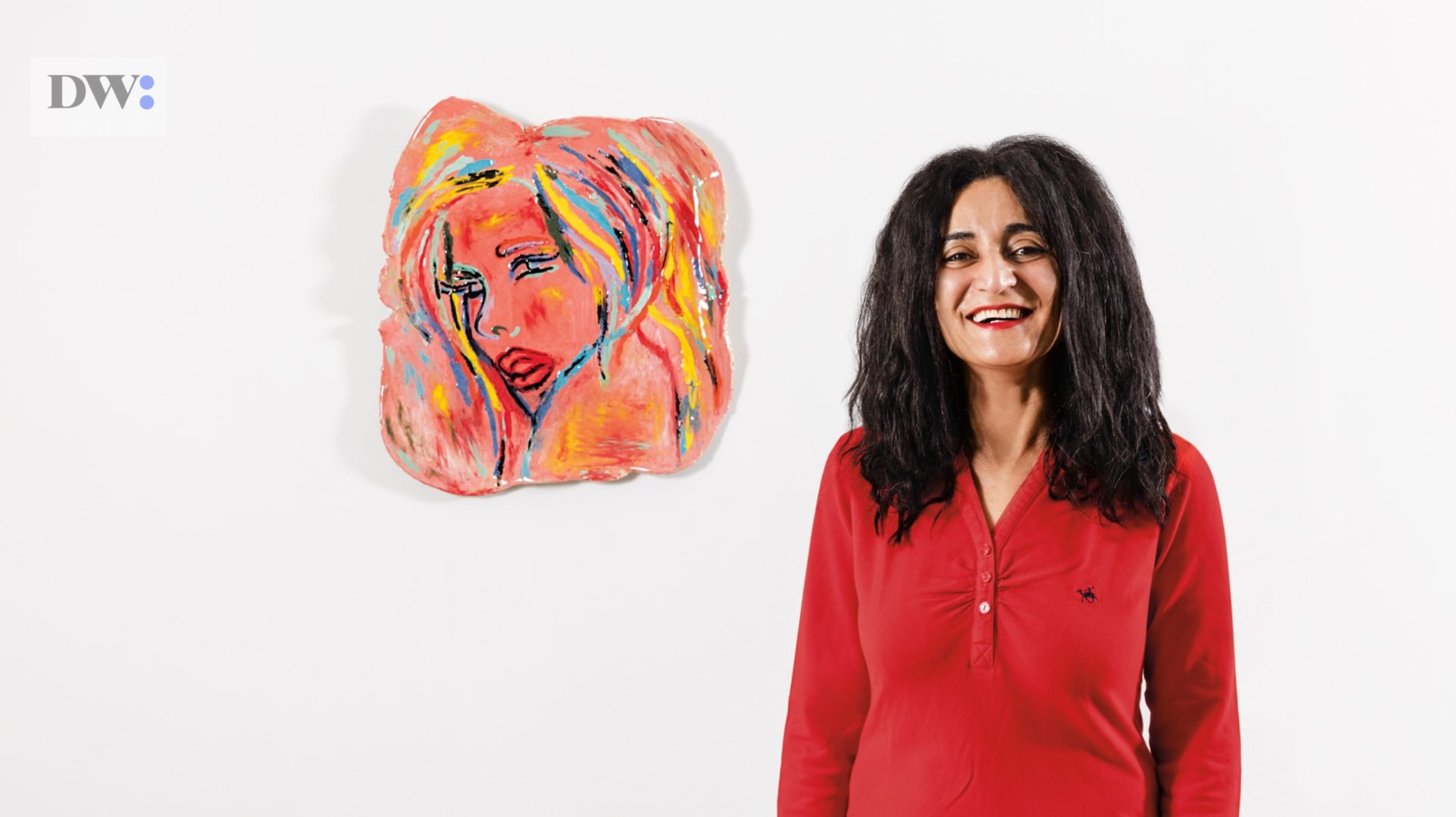In the world of Visual Arts, the male perspective has long dominated, often resulting in the objectification of female bodies. While renowned male artists like Picasso and Da Vinci are celebrated, exceptional female artists such as Ghada Amer create art that challenges and redefines these narratives.
Ghada Amer, born in Cairo, Egypt, in 1963, relocated to Nice, France, at the age of eleven. She pursued her studies in France, completing her Undergraduate and MFA at Villa Arson École Nationale Supérieure in Nice. Additionally, she studied at the School of the Museum of Fine Arts in Boston in 1987. In 1991, she moved to Paris for a postgraduate degree at the Institut des Hautes Études en Arts Plastiques. After gaining initial recognition in France, Amer accepted an invitation to the United States in 1996 for a residency at the University of North Carolina, Chapel Hill. She has since based her practice in New York.
Amer’s artistic practice spans painting, casting, sculpture, ceramics, works on paper, and garden and mixed-media installations. She frequently collaborates with her long-time friend Reza Farkhondeh, adding depth to her work. Recognizing that women often mimic behaviors and qualities created by others, Amer actively subverts these frameworks through her art. Her work delves into the complexities of identity, shaped by cultural and religious standards as well as personal longings and self-understanding.
Amer’s work appears in public collections worldwide, including the Arab Museum of Modern Art in Doha, the Art Institute of Chicago, the Barjeel Art Foundation in Sharjah, and the Brooklyn Museum of Art. Other notable collections include the Centre Georges Pompidou in Paris, the Chrysler Museum of Art in Norfolk, VA, the Crystal Bridges Museum of American Art in Bentonville, AR, the Guggenheim Museum in Abu Dhabi, and the Israel Museum in Jerusalem. She has participated in prominent group shows and biennials, such as the Whitney Biennial in 2000 and the Venice Biennales in 1999 (where she won the UNESCO Prize), 2005, and 2007. In 2008, the Brooklyn Museum of Art honored her with a mid-career retrospective.
Amer’s education at Villa Arson in Nice marked a pivotal moment in her career. Initially excluded from certain painting classes reserved for male students, she began carving out her own distinct place within the medium of painting. By using stitching in her paintings—a technique typically associated with femininity or ‘women’s craft’—and combining it with erotic imagery of women in positions of sexual pleasure, she reorients our understanding of objectification. Historically, male artists’ depictions of the female nude reduced the subject to a mere physical body devoid of agency. In contrast, Amer’s stitching imbues each image with sensitivity and complexity, avoiding this reduction.

Amer condemns oppressive legislation aimed at controlling women’s views of their bodies while also rejecting the first-wave feminist doctrine that denies the body to avoid victimization. The women in Amer’s paintings are neither objects nor victims; instead, they are independent subjects with distinct identities. Her exploration of femininity and love extends beyond painting to garden installations, ceramics, and sculptures, each associated with the act of painting.
According to a profile by Ocula Amer’s consideration of femininity and love extends beyond her painting style to her garden installations, ceramics, and sculptures. She associates each of these media with the act of painting. ‘All of my work is about painting and the history of painting,’ Amer explains.
Amer’s installations frequently incorporate text, as seen in her work “Women’s Qualities,” which premiered at the Busan Biennale in 2000 and was shown again in 2020 for Frieze Sculpture at Rockefeller Center.
In this piece, Amer asked pedestrians what attributes they thought women possessed and then spelled out the most common responses in flowerbeds. This installation reflects the centuries-old custom of preserving the first manifestation of an artist’s idea as they work through inspiration.
Ghada Amer’s work powerfully reclaims the female perspective in visual arts, challenging the dominant male gaze and redefining how female bodies are depicted and understood. Her diverse practice and global recognition highlight her significant contributions to contemporary art, establishing her as a pivotal figure in transforming the art world’s narratives.

Leave a Reply